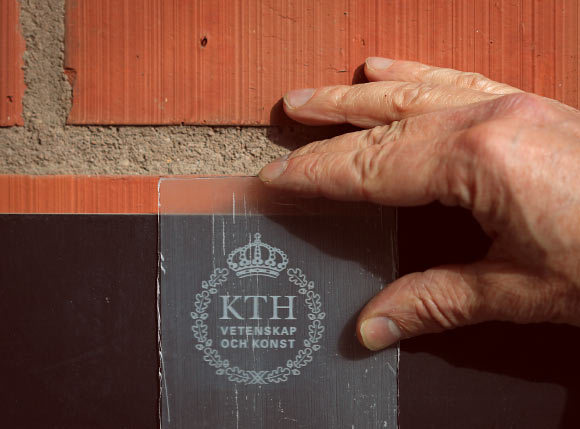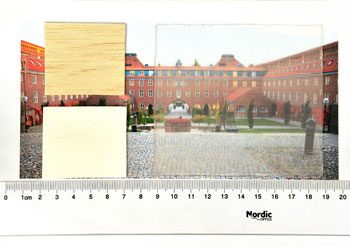
Wood has many great properties that make it the perfect building material — It is cheap, durable, easily available, and most importantly, environmentally sustainable. The one thing it is not, is transparent! Now thanks to a team of scientists at Stockholm's KTH Royal Institute of Technology the versatile material may even be able to add that attribute to its already impressive list.
Lead researcher Dr. Lars Berglund, who heads the Institute's biocomposites division, says he was inspired to create the transparent wood after learning how Japanese researchers had developed a see-through paper for use in flexible display screens for electronic devices. The team began by stripping out the wood's lignin. The naturally occurring complex polymer strengthens cell walls by bonding tightly with the cellulose. This is what makes wood hard and opaque, and also gives the material its characteristic brown color.

The "bleached" lignin-free wood was then infused with a polymer similar to the one used to make Plexiglas and baked at a temperature of 158°F for four hours. The result was a hybrid product that was not only stronger and lighter than the original wood but also, almost transparent. More importantly, it retained the same structure as timber, which means it could easily be used as a substitute for the original material.
The researchers were able to adjust the level of transparency by varying the amount of the polymer injected and also by changing the thickness of the wood. For instance, when they used the technique on an ultra-thin 0.7 mm piece, the resulting wood was 90% transparent. With a thicker, 3.7 mm chunk, the level of transparency dropped to 40%.
While scientists have previously created a see-through wood for small-scale applications like computer chips, "Franken-wood" is the first one being considered for large scale applications. The researchers, who revealed their findings in Biomacromolecules on April 11, envision using the transparent wood in buildings to allow for more natural light, or to create sturdier windows that let in the desired amount of light without sacrificing privacy.

Berglund also thinks the wood could play a significant role in the design of solar panels. The semi-transparent material would be able to retain light longer and give it more time to interact with the conductor, thus resulting in better solar efficiency. Additionally, substituting the currently used silica-based glass with this new product would help solar energy manufacturers improve their carbon footprint and lower the cost.
The team’s next goal is to enhance the transparency of the new material and test the technique on different types of wood. They are also experimenting with ways to scale up the manufacturing process so that the transparent material is cost-effective to make and easy to use.
Resources: Sciencenews, sciencedaili.com,sciencealert.com, Acs.org